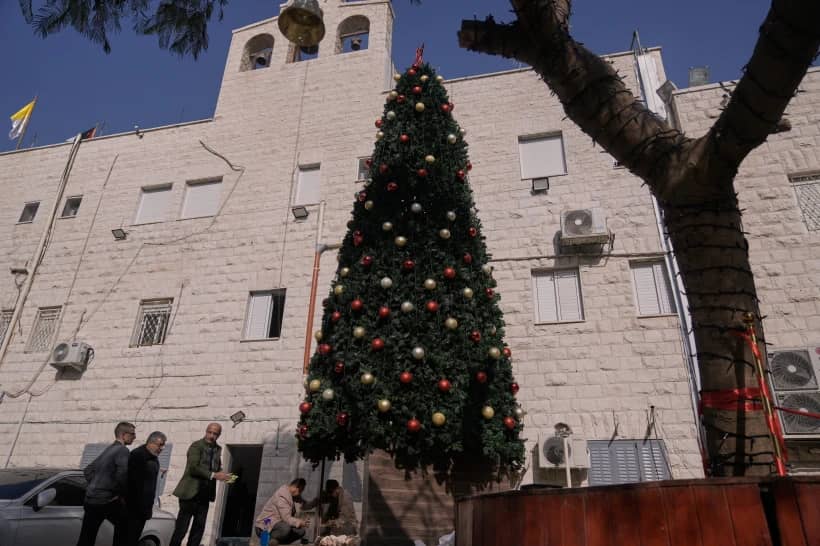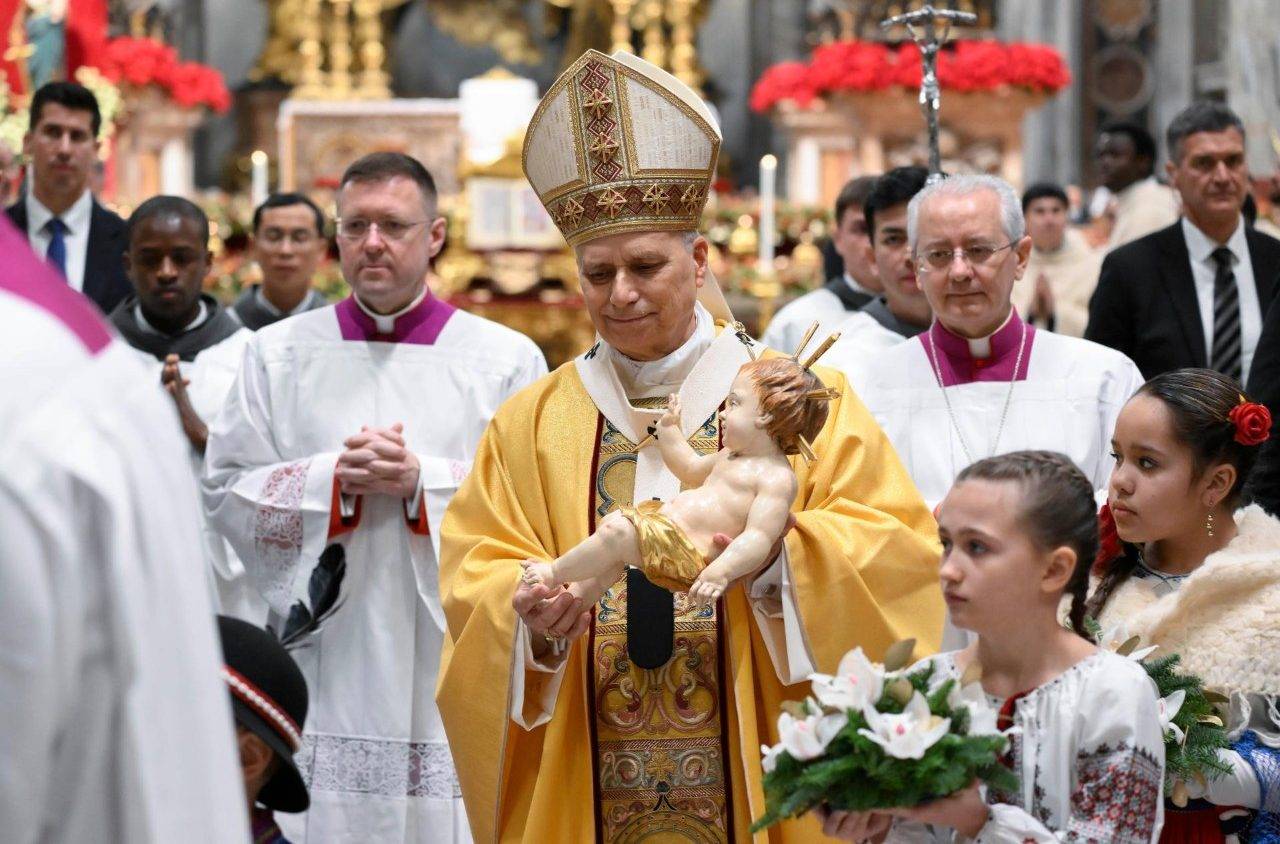ROME – In the argot of sociology, some organizations are “high structure,” meaning they rely on rules and procedures to hold things together, and others are “high culture,” meaning it’s much more about informal relationships and personal trust.
The Vatican, both historically and today, is basically a “high culture” outfit disguised as “high structure.”
There’s a cavalcade of norms governing every aspect of the place’s operations, but everyone knows those are more guidelines than hard-and-fast rules, and that who ends up making what decision is usually a lot more about personal ties than flow charts.
For that reason, personnel is always policy in the Eternal City, which makes Pope Francis’s choice Sunday to name the 62-year-old Cardinal Luis Antonio Tagle of Manila in the Philippines the new prefect of the Congregation for the Evangelization of Peoples a key move indeed.
Tagle replaces the 73-year-old Italian Cardinal Fernando Filoni, the Vatian’s former ambassador in Iraq who refused to vacate Baghdad in 2003 when American bombs began to fall, and who now moves on to become the grand master of the Equestrian Order of the Holy Sepulchre of Jerusalem.
Tagle’s move is important for at least four reasons.
First, it’s another strong Francis bishop in a senior Vatican post. It bolsters the ranks of Vatican personnel on board with the pope’s agenda, thereby giving Francis more leverage to get things done inside his own shop.
Tagle is widely known as the “Francis of Asia,” a social justice-oriented moderate who’s known best for his advocacy for immigrants and the poor, and whose personal lifestyle speaks to modesty and simplicity. As a young bishop, he was known for bicycling to cover Mass assignments by himself and for inviting local beggars into his residence for lunch.
Tagle’s theological background reflects the progressive, reform-oriented wing of the Second Vatican Council. He served as a member of the editorial board of the multi-volume History of Vatican II edited by Giuseppe Alberigo and Alberto Melone, key figures in the “Bologna School” embodying the liberal reading of the council.
Second, the Congregation for the Evangelization of Peoples is a big deal on the Vatican scene, and it’s about to become bigger.
Traditionally known by its old Latin name Propaganda Fidei, the department is responsible for the Church in mission territories, which has traditionally made it both politically and financially powerful in Rome and around the world.
Today, under the terms of the pope’s impending overhaul of Vatican structures, it’s set to become the centerpiece of a new mega-Dicastery for Evangelization, taking over the Pontifical Council for the New Evangelization as well. The idea is that this new department for evangelization will become number one in the Vatican’s internal pecking order, supplanting the Congregation for the Doctrine of the Faith, traditionally known as La Suprema, or “the supreme.”
Moreover, the mere fact that Tagle’s in charge also boosts Propaganda Fidei’s profile, given that he’s a celebrity in his own right with a large and devoted following on the Catholic lecture circuit. He’s a gifted communicator who wears his heart on his sleeve, and he’s capable of doing it successfully in multiple languages.
Third, Tagle’s appointment also puts an exclamation point on the “Philippines’ moment” in global Catholicism.
Today, the Philippines are the third largest Catholic country in the world, with a Catholic population of around 90 million, sitting behind only Brazil and Mexico and comfortably in front of the United States. Compared to Brazil and Mexico, however, Catholicism in the Philippines tends to be more dynamic, with higher average levels of faith and practice and a larger crop of vocations to the priesthood and religious life.
In many spots on the Catholic map, including parts of the U.S., Filipinos today are the new Irish, meaning the missionaries who keep local churches alive. It’s hard to go into any metro area of a major American city these days and not find that the Filipinos are also the most dynamic members of the local Catholic community, and wherever they land, parishes tend to take off.
Filipino ex-pats are also the backbone of local Catholic churches in a staggering variety of settings, from Saudi Arabia, where they work in the oil industry and as domestic servants to wealthy Saudi families, to Australia and even Tagle’s new home in Italy.
Fourth and finally, putting Tagle into such a meaningful post on the Roman stage cements his status as a possible successor to Francis.
Assuming a conclave isn’t on the horizon for a while, the timing likely would put Tagle into his mid-to-late 60s, which might strike electors as about right – young enough to govern, but old enough not to be there forever. Certainly Francis enthusiasts would see a lot to like in the charismatic Filipino “bishop of the poor.”
There are likely three hurdles Tagle will have to clear, however, for his candidacy one day to be serious.
First, he’ll have to overcome perceptions in some quarters that he’s a bit of a lightweight, able to emote on cue but short on heavy lifting. Running a major Vatican department with real decisions to make could help on that score.
Second, many experts on the clerical abuse crisis believe the response of the Church’s traditional mission territories so far has been spotty, including Tagle’s own home nation of the Philippines. Further, there are also concerns about how he handled a situation as president of the global Catholic charitable federation Caritas in which a known pedophile priest, a Belgian missionary in the Democratic Republic of Congo, was left in place despite a 2012 conviction back home for child sexual abuse and possession of child pornography.
As head of Propaganda Fidei, Tagle will be in charge of holding feet to the fire across the developing world in terms of enforcing anti-abuse protocols, and people will be watching closely to see how he responds.
Third, Propaganda Fidei is a major Vatican financial center, meaning it easily could be caught up in a new wave of money scandals. The task for Tagle will be to defuse the bomb before it goes off, meaning he could be a pivotal player in the success, or failure, of the pope’s financial reforms.
We’ll see how Tagle handles his new role, but in the meantime it’s beyond all doubt that on any list of must-watch figures in the Francis papacy, he’s now near the top.
Follow John Allen on Twitter: @JohnLAllenJr
Crux is dedicated to smart, wired and independent reporting on the Vatican and worldwide Catholic Church. That kind of reporting doesn’t come cheap, and we need your support. You can help Crux by giving a small amount monthly, or with a onetime gift. Please remember, Crux is a for-profit organization, so contributions are not tax-deductible.

















